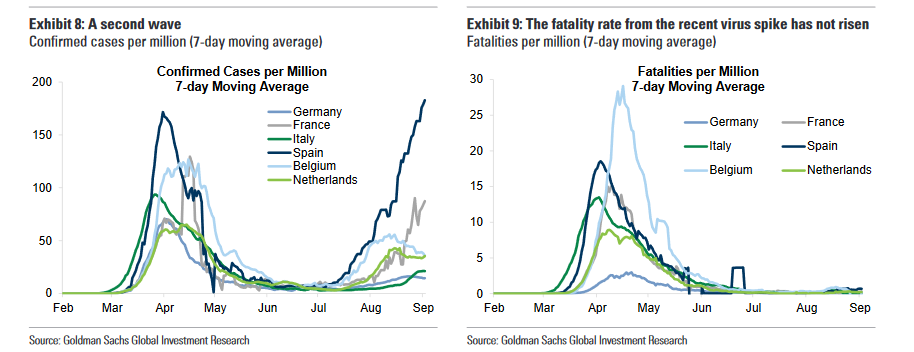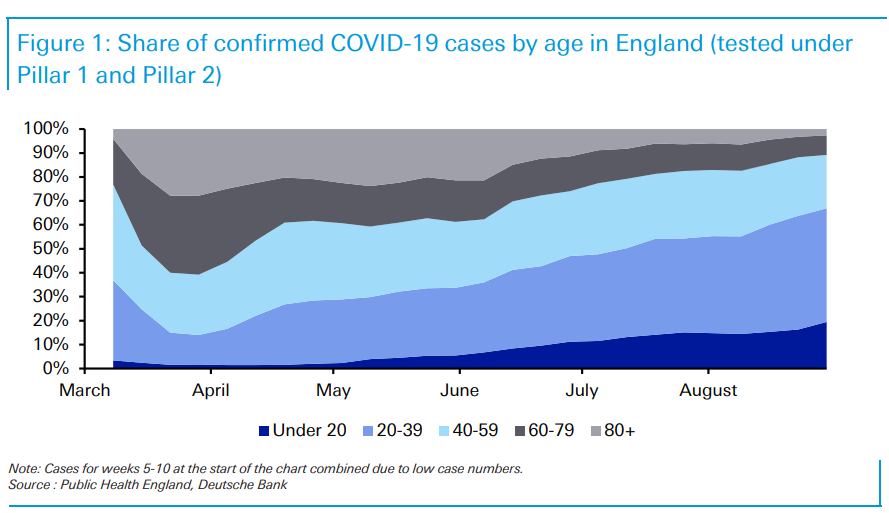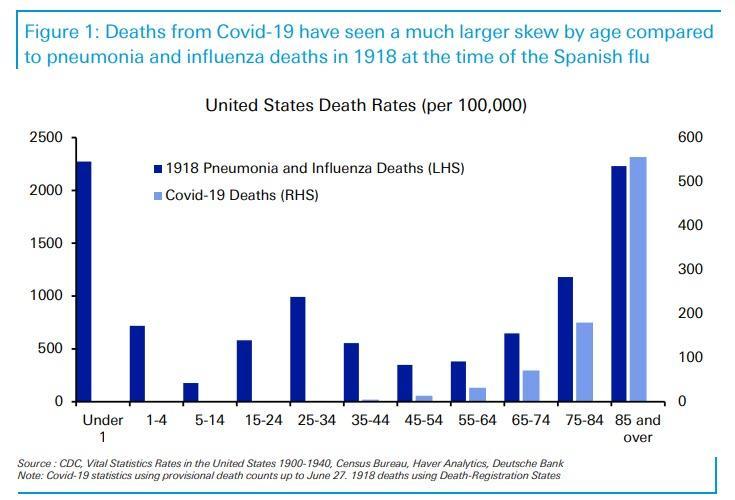Wall Street Explains Why Despite A “Second Wave” In COVID Cases, Deaths Have Barely Budged
Tyler Durden
Wed, 09/09/2020 – 12:44
With Wall Street hailing a coronavirus vaccine as a silver bullet to virtually everything that is ailing the global economy – with Goldman recently upgrading its 2021 GDP forecast on the assumption that a covid-19 vaccine will be available in late 2020 and widely used early next year – the reality, as Goldman also wrote in a report earlier this week, is that “even without a vaccine, so far the death toll from the recent virus spike has not risen” suggesting that the rise in cases is “either related to more testing or is occurring in younger, less vulnerable cohorts, in which case it points to evidence of society better protecting vulnerable groups.”
Picking up on this point at a time when many countries in Europe are suffering from a second wave of covid infections (as shown in the chart above) DB’s Jim Reid writes that “in recent days and weeks, concern has risen that Europe could be at the beginning
of a second wave of the pandemic.” He adds that just in his native UK “the number of confirmed cases rose by 2,988 yesterday, which was the largest daily increase since May 22.”
Yet noting the point brought up by Goldman above, Reid then counters that even as case numbers have risen, “hospitalizations and deaths have thankfully not.”
A key reason for this – as we first discussed in July in “The Under-40s Dilemma” – is that it’s now younger people who are more likely to get the virus.
As Reid points out, while most of this evidence has been anecdotal across the world the attached chart from Public Health England provides some telling statistics: back at the peak of the pandemic in late March, 61% of the confirmed cases were among those over 60. But they now make up just 11% of cases. For over 80 year olds it’s dropped from 28% to 3%. For those under 40 it’s the reverse picture with cases increasing from 14% to 67% of the total.
At the same time, cases among the 20-39 years old group has increased from 12% of the total to 48% over the same period: “this cohort seem to be where most of the concern is globally in terms of spreading the virus. They are young enough not to be too scared by the risks and also young enough to be restless from the restrictions.”
As we showed in this chart, unlike the Spanish flu, where young workers were incredibly vulnerable, it is primarily the elderly who’ve been most affected by the covid outbreak.
So will policymakers take into account the demographics of second wave cases or respond more to the inevitability of continually rising raw numbers?
via ZeroHedge News https://ift.tt/3hbYUwz Tyler Durden


